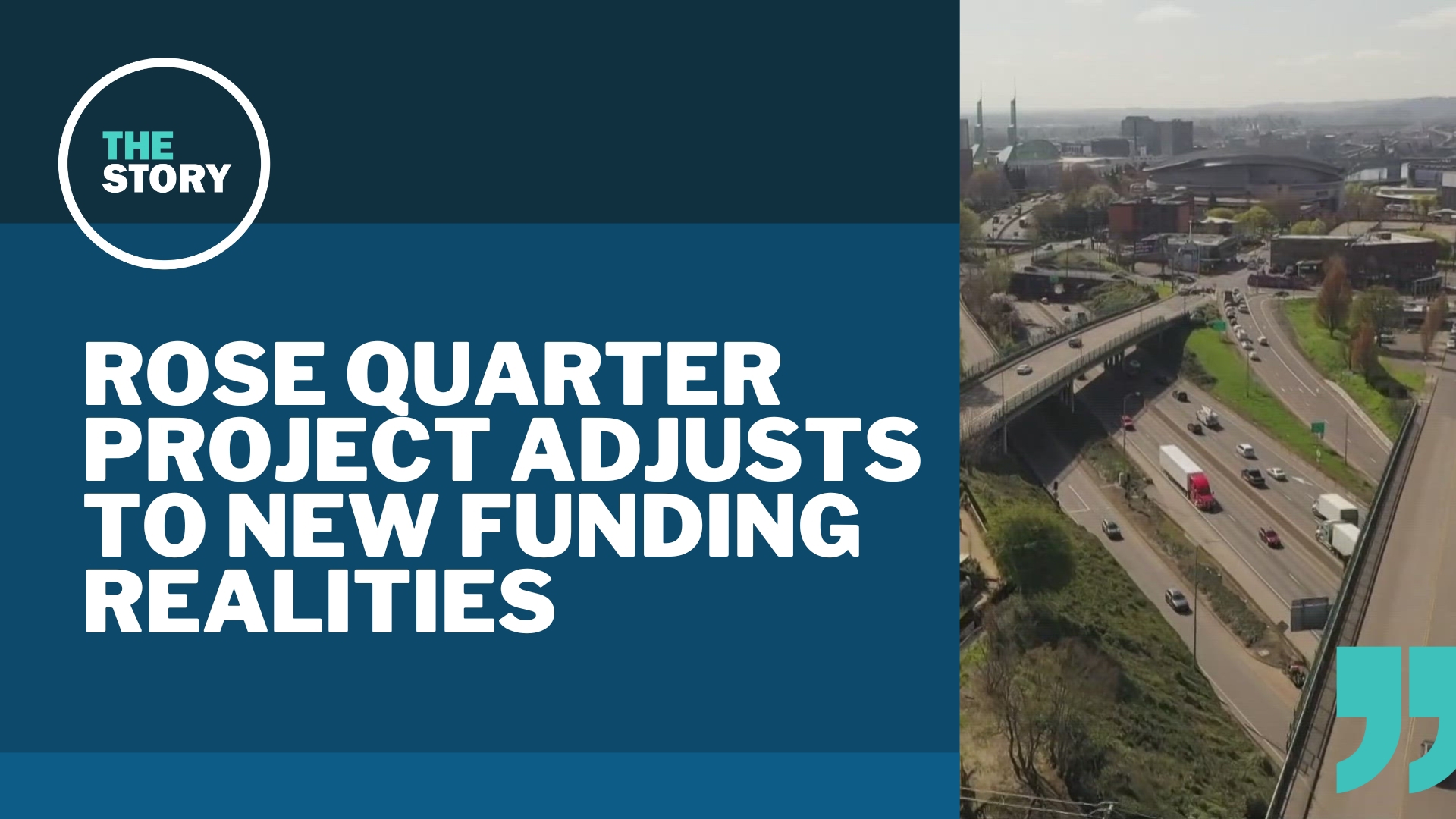PORTLAND, Ore. — The Oregon Department of Transportation has missed out on a key piece of federal funding for the Rose Quarter Improvement Project, leaving the future only partially clear for the effort to widen and cap a section of Interstate 5 through inner Northeast Portland.
ODOT received a $450 million federal grant earlier this year specifically for the freeway cover portion of the project, but that's far short of the full project's $1.5-1.9 billion price tag. ODOT applied to the federal INFRA grant program earlier this year, hoping to close the gap with an additional $750 million in federal money matched by another $250 million in state funding.
The project's Public Outreach and Media Manager, Rose Gerber, confirmed Thursday that ODOT was not awarded the requested INFRA funding, but she said the agency still plans to use the earlier $450 million grant to design and build the central portion of the highway cover near the current Broadway and Weidler overpasses.
"This initial segment of the highway cover will be compatible with the future full build out of the full highway cover and I-5 safety and operational improvements," she wrote in an email, adding that ODOT aims to begin construction on the initial segment by 2027.
She said ODOT will continue to apply for future federal grants and explore other funding opportunities, and will work with the state legislature to try to find additional funding during the 2025 session.
The full project design calls for the cover to stretch from around Tillamook Street to south of Weidler, essentially turning that whole section of I-5 into a tunnel. The freeway would also be expanded to add one more lane in each direction through the area, and several nearby entrance and exit ramps would be expanded, moved or modified.


The two halves of the project — the freeway expansion and the cover — have different origins. ODOT's original design proposal featured a pair of much smaller covers, and was mainly geared around adding the lanes in order to fix what the agency described as a regional bottleneck and high-crash corridor.
Local advocacy groups and elected officials pushed for much larger covers, seeing them as a means to reconnect the community and repair some of the damage that was done when the original construction of I-5 tore through Portland's historically Black Albina neighborhood.
The city of Portland and the group Albina Vision Trust both withdrew support for the project in 2020, but came back on board when ODOT switched to the current proposal with the single larger cap. Albina Vision Trust has strongly supported the freeway cover as one part of the group's much broader plan for restoring Lower Albina.
"In March, the federal government committed $450 million to the generational work of rebuilding Albina," Albina Vision Trust said in a statement Thursday. "This was not only the largest award in the history of the Oregon Department of Transportation, but the largest award granted to any project in America. Today's news does not alarm us. With the eyes on the nation upon us, we are confident that leaders across Oregon remain steadfastly committed to seeing this project through."
At the same time, the freeway widening aspect of the project has faced staunch opposition from environmental groups and freeway fighters, who have argued that the expansion is out of step with Portland's and Metro's climate goals. Several of those groups have filed multiple lawsuits aiming to force the project to go through the full federal environmental review process, rather than the more abridged version that it was able to use to win federal approval in 2022.
“We continue to call on state legislators, Governor Tina Kotek and the Oregon Department of Transportation to develop a plan for a “right sized” Rose Quarter project that leads with investments that restore the livability of Albina, rather than needlessly doubling the size of the I-5 freeway,” said Chris Smith, a co-founder of No More Freeways.
That doesn't appear to be ODOT's plan; the initial segment approach that Gerber outlined is in keeping with what ODOT discussed in a presentation to the Oregon Transportation Commission back in August. If the INFRA funding didn't come through, ODOT officials said at the time, the agency would build as much of the cover as possible with existing funding and then seek future funding to finish the job later, with the top priority being the completion of the rest of the cover.
That strategy has drawn objections from critics of the project, who have argued that ODOT is making the initial cover work more expensive than necessary by building the caps in a way that can accommodate the plan to widen the freeway underneath at a later date.
"You represented to the federal government that you would have a deluxe version of covers, that would cover a much larger area, and you got $450 million, the largest grant in the country," Joe Cortright from City Observatory said during public testimony at the August meeting. "And now you’re proposing paring that back to just a fraction of the area that you said you would cover, and spending... the money the federal government gave you for covers on widening the freeway."

